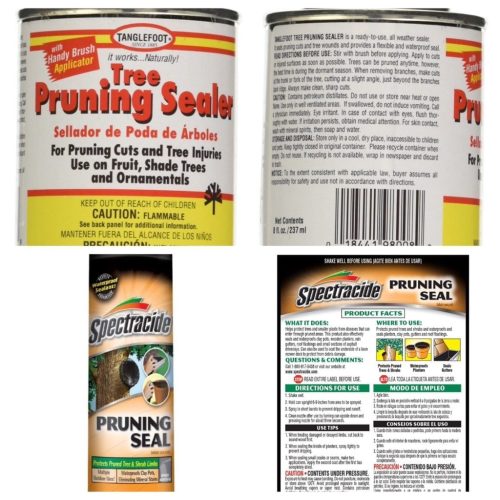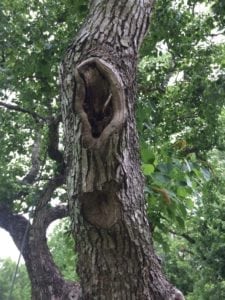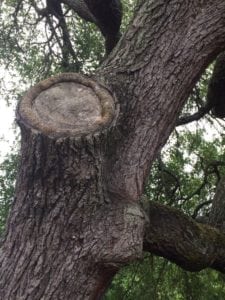Tree Pruning Wound Care (Pruning Paints)

Tree pruning wound care (pruning paint) was once commonly applied. However, there is no research supporting the claim that pruning paint aids in wound closure or decay resistance. In fact, pruning paint prevents the tree from utilizing its natural healing process. Pruning paints may be applied for cosmetic purposes but are neither required nor recommended in most cases.
Past Misconceptions

Tree pruning wound care (pruning paint) are products that are often petroleum-based, with some even containing asphalt. They claim to aid the healing of pruning cuts, and prevent rot. Contradictory, pruning paints may trap moisture in the tree. This encourages decay, bacteria, and fungi growth. Pruning paint also interferes with the trees natural recovery process, preventing it from developing calloused wood.
Current Practice
Trees don’t “heal”, they grow new wood which covers the pruning cut and protects from diseases or pests. Making proper pruning cuts in the correct location allows the tree to readily recover from the wounds all on their own! When applicable, it is wise to trim a tree when it is young. This practice of structural pruning prevents the need for large cuts to be made later. Larger cuts are increasingly difficult and timely for a mature tree to close, leaving the wounds more susceptible to infestation. These large wounds are often seen as an exception to the rule, and pruning paint is applied as the best option for the sake of the tree. Another big exception is in the case of oak wilt. The insect that transmits the oak wilt fungus is a sap feeding beetle. If pruning cuts are left exposed in an area where oak wilt is present, the sap is a beacon for the fungus carrying beetle. In areas where oak wilt is a concern, pruning paint should immediately be applied to every cut made on oaks.

